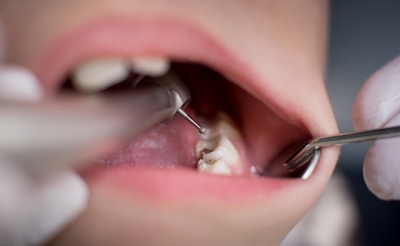Scientists find new bacterial species involved in tooth decay
By IANS | Published: July 3, 2023 03:45 PM2023-07-03T15:45:20+5:302023-07-03T15:50:10+5:30
New York, July 3 A team of US researchers has discovered that a bacterial species that was previously ...

Scientists find new bacterial species involved in tooth decay
New York, July 3 A team of US researchers has discovered that a bacterial species that was previously associated only with gum disease can have a major role in causing tooth decay.
Scientists have long considered the plaque-forming and acid-making Streptococcus mutans as the principal cause of tooth decay -- also known as dental caries.
However, in the new study, which appeared in the journal Nature Communications, researchers showed that Selenomonas sputigena can work as a key partner of S. mutans, greatly enhancing its cavity-making power.
"This was an unexpected finding that gives us new insights into the development of caries, highlights potential future targets for cavity prevention, and reveals novel mechanisms of bacterial biofilm formation that may be relevant in other clinical contexts," said Hyun (Michel) Koo DDS, Professor in the Department of Orthodontics at University of Pennsylvania School of Dental Medicine.
Caries is considered the most common chronic disease in children and adults worldwide. It arises when S. mutans and other acid-making bacteria are insufficiently removed by teeth-brushing and other oral care methods, and end up forming a protective biofilm, or "plaque," on teeth.
Within plaque, these bacteria consume sugars from drinks or food, converting them to acids. If the plaque is left in place for too long, these acids start to erode the enamel of affected teeth, in time creating cavities.
In the study, the researchers took samples of plaque from the teeth of 300 children aged 3-5 years, half of whom had caries, and analysed the samples using an array of advanced tests.
The tests included sequencing of bacterial gene activity in the samples, analyses of the biological pathways implied by this bacterial activity, and even direct microscopic imaging.
The researchers then validated their findings on a further set of 116 plaque samples from 3 to 5-year-olds to show that together with S. mutans, S. sputigena can boost the caries process. S. mutan bacterial species are known to use available sugar to build sticky constructions called glucans that are part of the protective plaque environment.
The researchers observed that S. sputigena, which possesses small appendages allowing it to move across surfaces, can become trapped by these glucans. Once trapped, S. sputigena proliferates rapidly, using its own cells to make honeycomb-shaped "superstructures" that encapsulate and protect S. mutans.
The result of this unexpected partnership, as the researchers showed using animal models, is a greatly increased and concentrated production of acid, which significantly worsens caries severity.
The findings, Koo said, show a more complex microbial interaction than was thought to occur, and provide a better understanding of how childhood cavities develop -- an understanding that could lead to better ways of preventing cavities. "Disrupting these protective S. sputigena superstructures using specific enzymes or more precise and effective methods of tooth-brushing could be one approach," Koo said.
Disclaimer: This post has been auto-published from an agency feed without any modifications to the text and has not been reviewed by an editor
Open in app